testing with pytest
Today I will try to show a practical demo of using pytest.
Furthermore I will show we can be also produce coverage information in the form of an html report from the the pytest testing suite.
Initially i will install the pytest package if its not installed together with the coverage pytest plugin by running on a bash shell
pip install pytest pytest-cov
Ok. now we have our coverage plugin for pytest installed so lets create a little boring demo.
i create a directory and create a python file inside it.There I create the function
If it receives input of no length (so something like ‘’) then it returns something grumpily otherwise if it receives input of length less than 3 it returns something else grumpily. Finaly if the length its more than 3 then it does something else with the input.
The main code called rather unimaginatively covdemo.py :
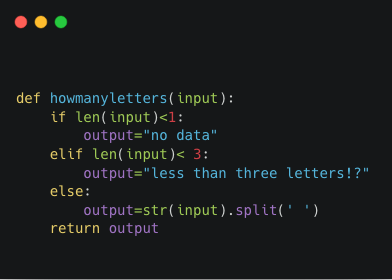
I also create a test file in the same directory called test_covdemo.py . Here is the test code in all its grace and beauty :
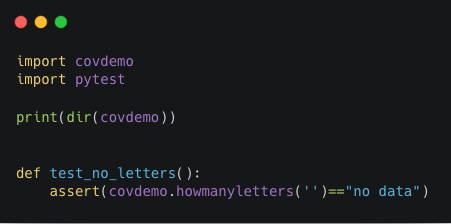
When I create this test I import the file that I created before. In order to get a clearer picture I print the internals of what I imported in order to see that I picked the function that I want to test.
I do this by:
print(dir(covtest))
I get from this the following and from what I see my function ‘howmanyletters’ has been picked up by the import.Great!!!!
['__builtins__', '__cached__', '__doc__', '__file__', '__loader__', '__name__',
'__package__', '__spec__', 'howmanyletters', 'pytest']
Test discoverability
There is a reason why i called my test file and my test functions in this way. By calling a file test_* or _test i ensure this file gets autocollected by pytest when I eventually run it. Furthermore by call calling my testing functions test_something or test_something_else inside my test_something.py file those tests get picked up. Pytest will only execute whatever function has test or *test in it so that when running the tests the
print(dir(covtest))
statement will be ignored.
Runnning the test/tests
ok its time to run my tests. I save and exit from my programming environment and go to the terminal. There I put the following on the bash prompt:
pytest -v
(-v is for verbose by the way)

Yay. pytest found my test_covtest.py file and also my test_no_letters function. It run the test … the test passed And I got a [PASSED] in glorious green color. Life is good ☺️
Testing coverage
Test coverage measures the percentage covered area to test the feature/functionality. It includes information about which parts of a program are actually executed when running our test suite to determine whether all the corners of program has been covered/executed.
What Test Coverage does
-
Finding area of a requirement not implemented by a set of test cases
-
Helps to create additional test cases to increase coverage
-
Identifying meaningless test cases that do not increase coverage
In order to run my test suite and also get coverage information I need to just provide the directory of where the code to be tested in. In order to be able to do this easily I go to the directory where the code is and do the following:
CWD="$(pwd)"
I just put the current working directory into a bash variable. I then run pytest like this
pytest -v --cov=$CWD --cov-report html
I get the same screen as before but also the notification that the coverage report has been produced as well. Having a look at the HTML report I see this:
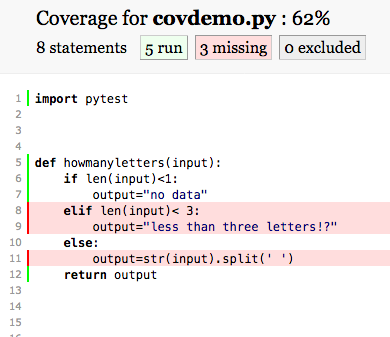
Hm. It says I have not covered lines 8/9/11 and that my coverage is 62% .
I add another test to cover the eventuality of character length more than 0 but less than 3.
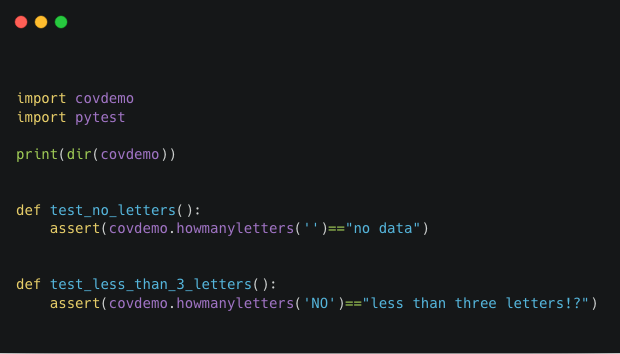
running the same thing as above again
pytest -v --cov=$CWD --cov-report html
I get
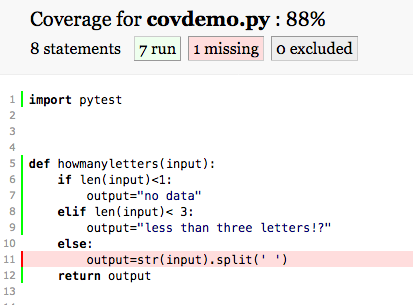
Hm… Close. 88% coverage and only one line untested. Line 11…
Writing another test case
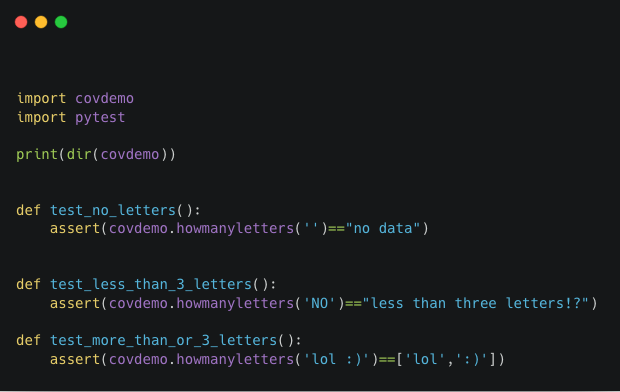
I get
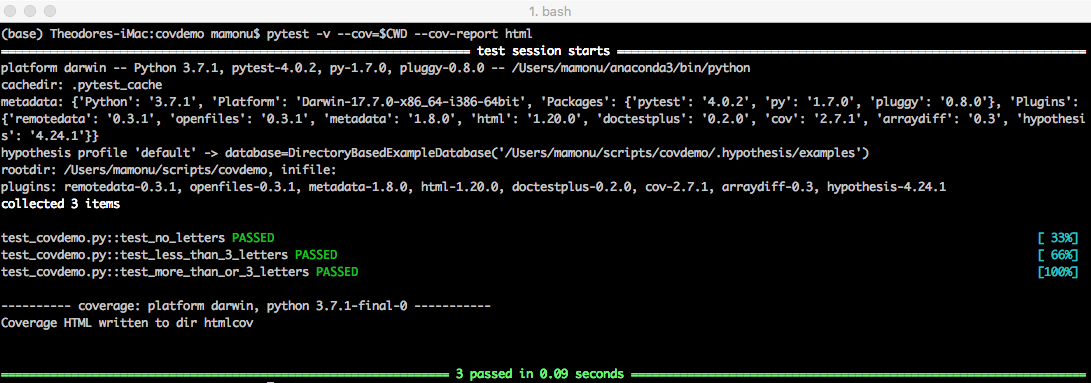
and by checking the HTML report
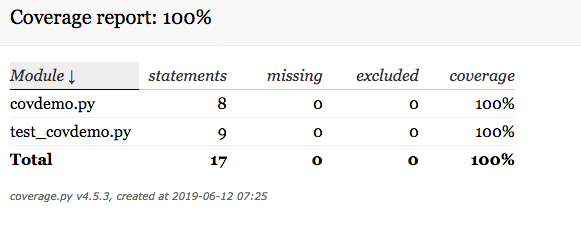
![]()
OK now I have full testing coverage!!
At this point I need to remind everyone again that what the report was doing was giving information about which parts of a program were actually executed when running the test suite, in order to determine which branches of conditional statements have been taken.
Coverage is a very good tool / metric. However like everything in life as far as quality is concerned we need to be sceptics.Cue Goodhart’s law states that “When a measure becomes a target, it ceases to be a good measure.”
Its easy to maximise coverage and it could mean that the percentage of code tested is high but just because this % is high or 100% doesnt mean that our software is infallible.
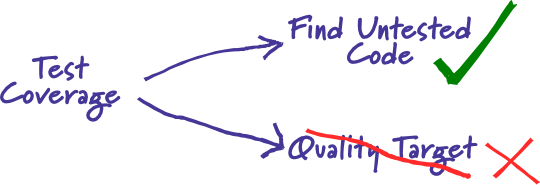
The only thing we know is that we measured what % of code has NOT been tested. For this coverage is a perfect metric.
Martin Fowler has a great article about testing coverage and his concerns have a point and it is highly recommended that you read it.
Code for this post is available here
TM
References
[1] Martin Fowler “ Test Coverage “
